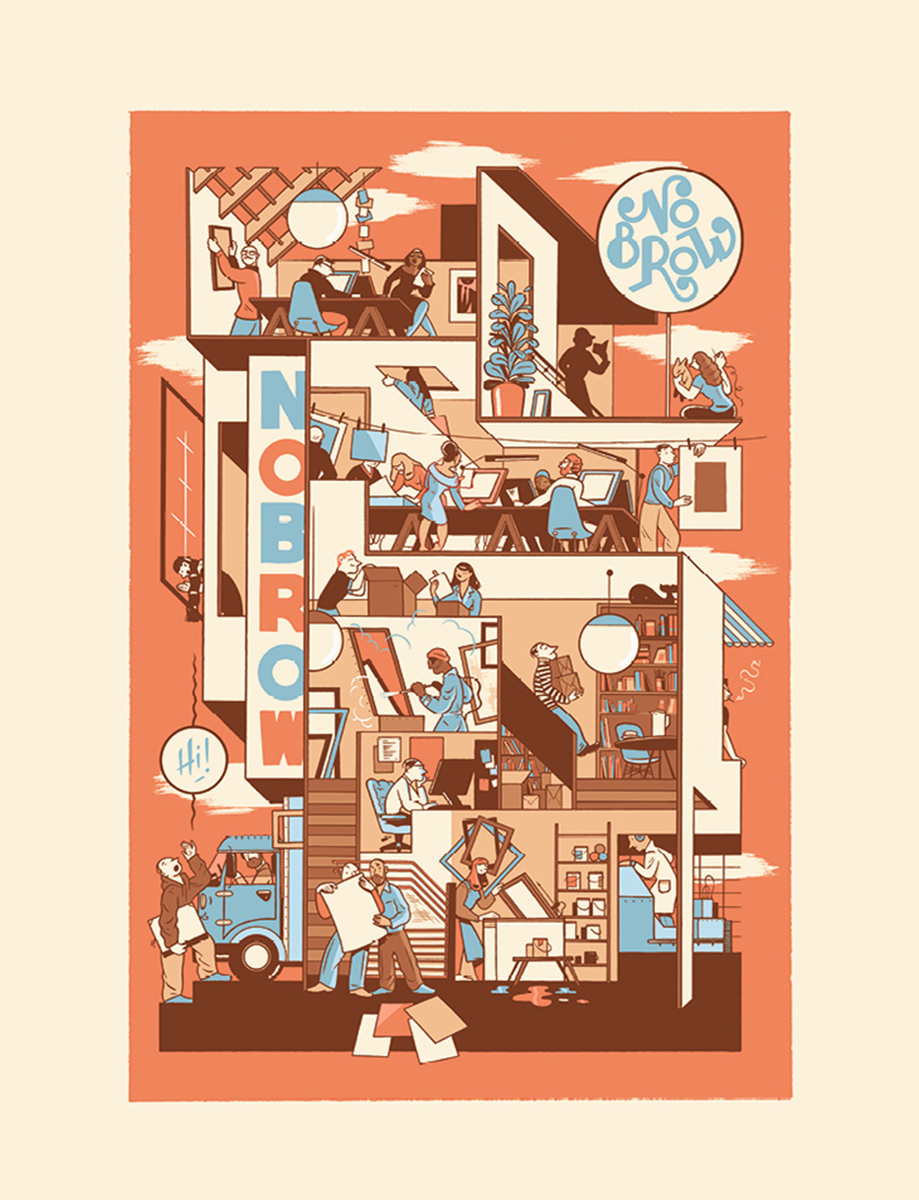The garments and accessories chosen were wide-ranging, from luxury items, as in a Hermes Birkin handbag, to everyday pieces, like a pair of Levi 501s, to those with religious, cultural and historical significance, like the sari, the kippah or the pearl necklace. But one of the most notable pieces on display was item 050, a red Champion hoodie. Although worthy of inclusion for its ubiquity alone (after all, other items included flip flops, a backpack and a Gore-Tex jacket), Antonelli also saw the hoodie as having a potent significance. As she put it, the hoodie’s ‘a great design, but also it’s become this tragic political symbol’, in direct reference to Trayvon Martin.

The hoodie became a symbol of the defiance, unity, and deep frustration
Martin, an unarmed 17 year old student, was fatally shot by George Zimmerman in February 2012 while returning to his father’s fiance’s home in a Florida gated community. Martin’s killing sparked outrage; the shooting itself was widely seen as racial profiling, many criticised the Sanford police department’s handling of the case, and Zimmerman’s subsequent acquittal of the charge of second-degree murder was extremely contentious.
Martin was wearing a hoodie when he was shot, and Zimmerman, in the call he made to police shortly before the killing, used this fact in his description of ‘a suspicious person’. The notion that Zimmerman shot Martin, in part because of the perceived inherent threat of a black teenager clad in a hoodie, was instrumental to Zimmerman’s successfully plea of self-defence. In the protests that followed Martin’s death the hoodie was worn in solidarity. Senators and NBA players alike donned hoodies, and a ‘Million Hoodie March’ took place in New York in March of the same year. The hoodie became a symbol of the defiance, unity, and deep frustration that came in the aftermath of Martin’s death.

All items of clothing are coded; the suit, the leather jacket and the must-have pair of trainers all derive their status from their respective aesthetics and histories. However the hoodie, and its close cousin the tracksuit, has one of the most complex socio-political meanings of any garment in recent times. Of the 111 items in the exhibition, it’s hard to think of any which has been used so much as a shorthand for criminality, aside from maybe the balaclava (which let’s face it is worn almost exclusively to commit crimes). This narrative of hoodie wearers as anti-social, working-class, aggressive and criminal is multinational. In the UK in the era of the ASBO the hoodie was banned from different schools and shopping centres. The US saw similar measures put in place, and the NBA implemented a 2005 dress code that counted the hoodie among its prohibited items.
Artists relied on the hoodie to help them steal paint and tag cars and without getting caught by police
These bans illustrate not just that hoodies are charged and stigmatised, but what the attitudes to their perceived wearers are. The reason given for the bans is never that the hoodie is inappropriate in itself, but rather that the wearers of hoodies bring with them a certain ‘kind’ of behaviour. The subtext of the hoodie bans is that the behaviour associated is banned too, a logic that almost melds hoodie with wearer. In the UK the hoodie was so closely associated with a popular conception of anti-social youth and a certain ‘kind’ of person that the word hoodie started being used to describe the wearer too, as in then-Prime Minister David Cameron’s (arguably cynical) ‘hug-a-hoodie’ speech in 2006. If businessmen wear suits, ASBO-deserving youths wear hoodies, or simply are hoodies. Though on-screen depictions of ‘hoodies’, in films like La Haine, Kidulthood, Attack the Block and Top Boy have been more positive, or at least nuanced, than mass media portrayals, all depict the same faithful uniform; wearer becomes synonymous with garment.

The anonymity that the hoodie offers might go some way to understanding its status; in semi-concealing the face it can function almost like a balaclava. But there’s an argument that the hoodie’s history too comes in to play. Although the modern-day hoodie has been around since the ‘30s (with Champion claiming to have created the first), it wasn’t until the ‘70s and ‘80s that it was widely worn.
Originally the preserve of athletes and labourers, the hoodie first took off among different street communities as sportswear was appropriated as streetwear. According to Rolling Stone, hoodies first appeared on the streets of New York between 1974 and 1975. The story of the hoodie’s adoption by skateboarders, graffiti artists and hip-hop communities is also the story of how these subcultures took off as outlaw pursuits. Graffiti culture was huge in ‘70s New York, with crews like the Rolling Thunder Writers and artists like Lady Pink and Daze using the whole city as a canvas. Graffiti writing even helped launch the now infamous Jean-Michel Basquiat into the art world, through his and Diaz’s SAMO character. Artists relied on the hoodie to help them steal paint and tag cars and without getting caught by police, and the extra warmth the hoodie provided enabled writers to work through cold New York nights.

Similarly, several US cities had been imposing skateboarding bans since the mid-’60s, and the resulting lack of skate parks in the US in the ‘80s led skateboarders to seek increasingly creative, and illegal, terrain. The hoodie helped facilitate sneaking into disused empty swimming pools, and was more practical for tricks than other garments. Magazines like Thrasher, which was founded in 1981, cultivated the outsider image that had been semi-imposed on the skate community. The ‘Thrasher’ hoodie, which recently re emerged as a cult item, owes its existence to early Santa Monica skaters like Natas Kaupas and Mark Gonzales.
The hoodie has an embedded counter-cultural cool, urban cache
Hip-hop crews’ early adoption of the hoodie has been linked to their style emulation of athletes and sport stars. The hoodie, like the tracksuit, trainers, and basketball jersey, were all cool because of their association to success on the sports field. By the ‘90s, the hoodie was a de facto gangster rap item, with Wu Tang Clan’s hugely successful ‘Wu Wear’ clothing line consisting mainly of hoodies and t-shirts.The hoodie’s dual properties of concealment and warmth meant it was popular with the underground, and this proximity to an anti-establishment stance in turn reinforced it’s tough and cool image, and could play into how the hoodie is still Perceived.

The peak of the hoodie as pariah item was the early 2000s. Now it occupies an interesting space; its sheer practicality has meant it’s long been a likely fixture of any wardrobe, and it’s recently re-emerged in the collections of high-fashion brands like Gosha Rubchinskiy and Vetements (Vetements’ use of the Champion branding is particularly fitting given the hoodie’s beginnings). Streetwear labels and outfits including Palace and Wavey Garms also ensure its longevity outside of high fashion.

While the hoodie’s long-standing perceived proximity might seem to make it an unlikely enduring item, it’s the negative connotations that actually preserve it. In the same way that denim, plaid and grunge were taken up by fashion because of their associations to the working classes and subcultures, the hoodie carries meanings which can be co-opted and capitalised upon, and it’s this which makes it enduring. In the same way that the movements that the hoodie was associated with early on have gone more mainstream, the hoodie too is newly acceptable. It’s been oft-quoted that Mark Zuckerberg wears a hoodie to board meetings as an exercise in asserting authority, the general idea being that if you can afford to be wearing as improbable an item as a hoodie in a business setting, then you must be in charge. What we know is that the hoodie has an embedded counter-cultural cool, urban cache, it’s just unlikely that those on the periphery can benefit.






